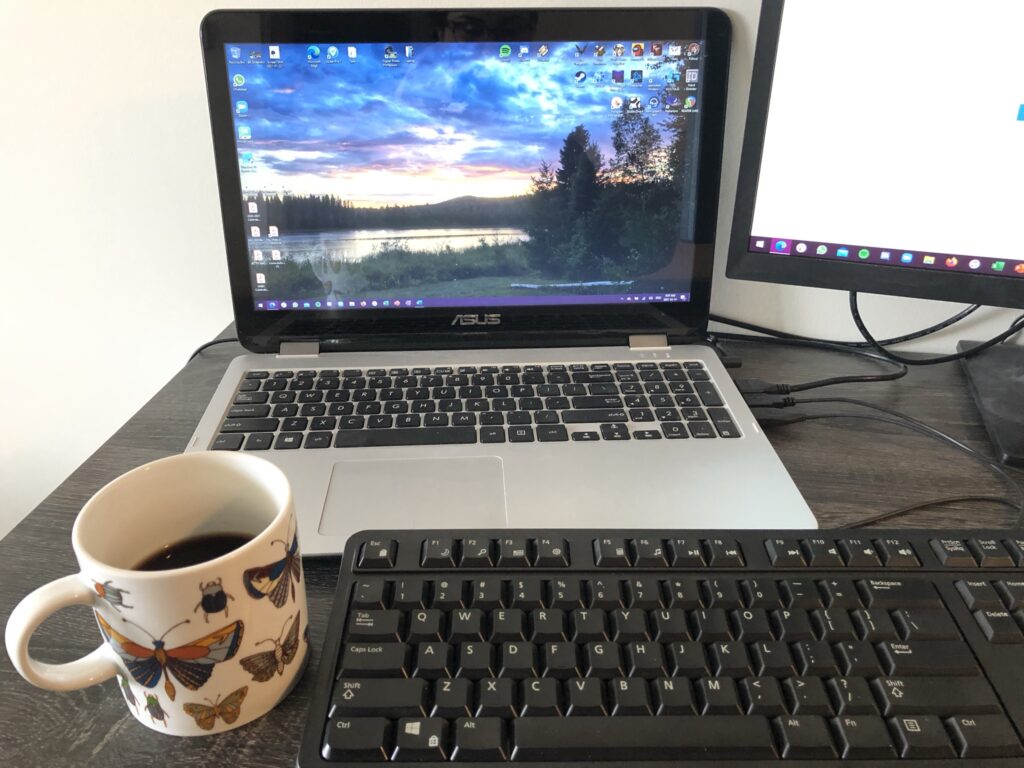My Block 1 Inquiry Question was: How can I effectively teach EVERY student? I have basically kept this inquiry throughout my time in the Education Program. I have made some adjustments, getting more specific over time, then getting broad again. For example, “how do I teach all learners division?” – which leads me to ask, “how can I teach ALL learners?”
Those are big questions. It requires a type of inquiry approach to attempt to answer the question(s). What I am realizing is that some questions are not meant to be “answered” per se. I should work hard to find strategies that support my inquiry approach and inquiry question, but there is no simple answer. Allow me to explain in more detail below.
I chose the Spirals of Inquiry approach to support my big inquiry question of “how can I effectively teach EVERY student?” in Block 2. The Spirals of Inquiry approach is about asking the important questions while following the steps. It is important to note that these steps flow into one another, and the spiral is connected, meaning that the inquiry process is cyclical. I chose this approach because it feels natural. One asks the important questions, while revisiting the steps as one gathers information.
My inquiry has been both at the forefront and in the back of my mind as I navigate the coursework and EDUC391 practicum in Block 2. Teaching every student means using the principles of the Universal Design for Learning and Differentiated Instruction. I have learned a great deal about my inquiry throughout Block 2. Teaching all learners requires careful planning for exceptional learners, those that need more support, and those that require a different approach. For example, I tend to focus on the audio/visual aspects of teaching, but I have learned about the importance of “doing”, as well.
Another way to enhance the “doing” part of learning is the incorporation of ADST (Applied Design, Skills, and Technologies). We (Elementary cohort) had the privilege of learning about ADST in Math/Science (EDUC398) and the Humanities (EDUC397).
Part of good teaching is having good assessment strategies and following through based on what the assessment tells you about the learners, and the teaching itself. EDUC421 has taught me that assessment, when done appropriately, informs and supports learning. I used to think that assessment was all about the grades, but it is so much more than that. Assessment and feedback should be utilized in a manner that supports student learning. Using a variety of assessment techniques, such as pre-assessment, self-assessment, formative assessment and feedback, and summative assessment will lead to stronger, more confident students (and educators!).
The reflections as part of EDUC391 and EDUC405 were insightful for me as both a learner and an educator. The interwoven course EDUC446 was also insightful, as we were interacting with Indigenous content in a respectful, trusting environment. Reviewing the Discussion Board posts from my classmates was inspiring.
So, what have I learned about my inquiry? I have learned about the importance of the question itself. I have learned that ADST is a valuable, important part of the learning continuum. I have learned that assessment is a tool to inform teaching and learning. I also learned that building a sense of community and collaboration with colleagues is important to my success, not only as a student, but as an educator. Finally, I realize now that learning (and especially learning to be an educator) never ends. The important questions will never be fully answered, and that is a good thing. It means that the exploration will continue, and I will learn how to be a more effective educator over time.
One of my goals for Block 3 is to continue working on assignments and other coursework steadily, as I “mostly” accomplished this Block. I am really interested in the class list for Block 3, and I think it will be easy to stay focused with such interesting content. In terms of my upcoming practicum (EDUC400), I also want to be staying on top of my tasks. My first week in EDUC391 practicum was rather difficult. I found it overwhelming to plan “last minute” the day before a lesson. Instead, for week 2-3, I spent time planning on the weekend for the entire week and made smaller adjustments the day beforehand. That worked much better and gave me a sense of control on my stress levels. By week 3, I felt as though I was simply another teacher in the school – it felt like I was doing my best lessons, and my best preparation (lesson plans really started coming together).
I would like to attend more Pro-D opportunities and develop my confidence and sense of self as an educator. I am scheduled to attend the Spring Fling conference on April 23, 2021. It will be nice to finally have time to attend a Pro-D day.
My final goal is to focus on effective teaching strategies in Block 3, both in EDUC490 practicum and through my coursework. I want to further investigate my inquiry question(s), and better develop my skills as both a learner and educator.


Leave a Reply